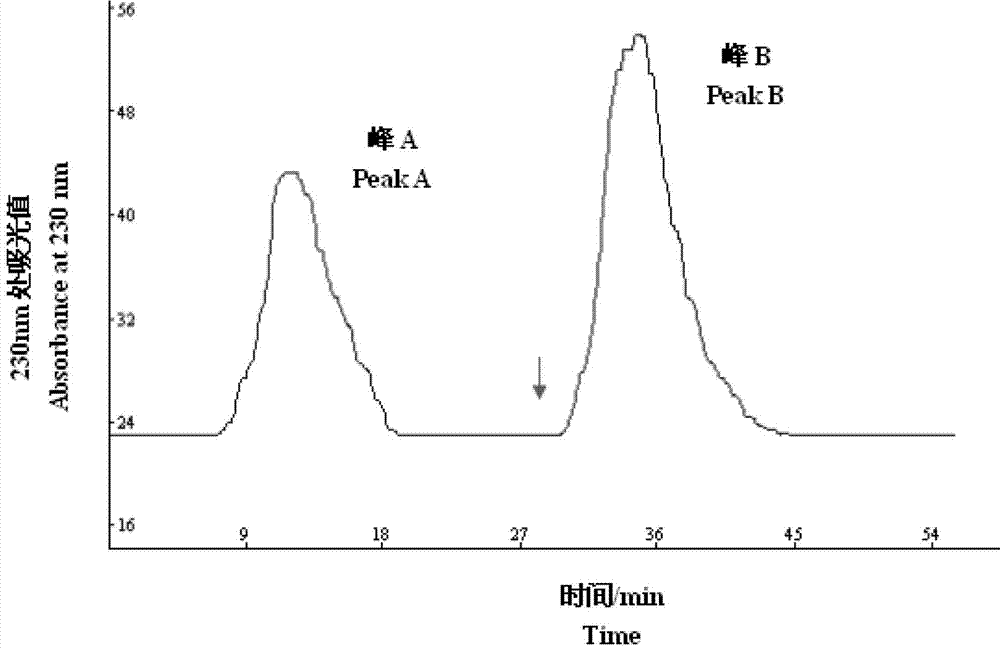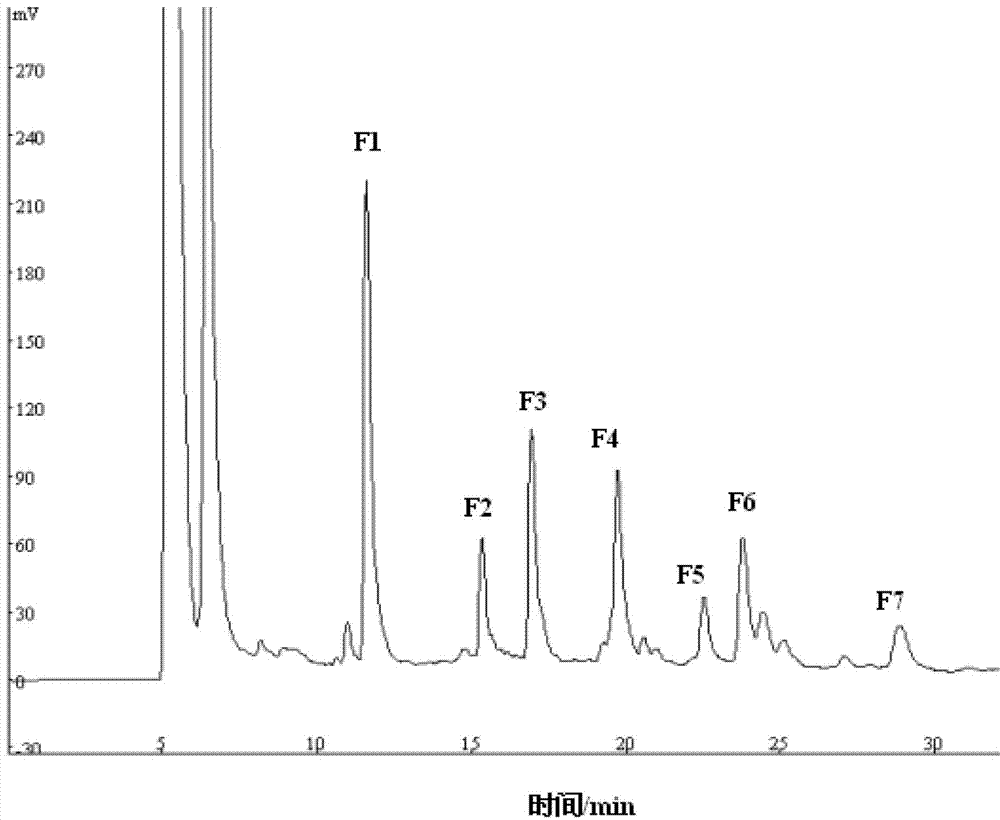Holstein cow spleen-derived antibacterial peptide as well as preparation method and application thereof
An antimicrobial peptide and spleen technology, applied in the field of antimicrobial peptides and their coding sequences, can solve problems such as research reports on the isolation and identification of antimicrobial peptides that have not yet been seen, and achieve the effect of convenient artificial synthesis, simple structure, and high-efficiency antibacterial effect
- Summary
- Abstract
- Description
- Claims
- Application Information
AI Technical Summary
Problems solved by technology
Method used
Image
Examples
Embodiment 1
[0031] Example 1: Preparation of crude spleen extract
[0032] Take the spleen of healthy Holstein cows, remove the surface coating, and cut the spleen into about 3mm 3 Place the small pieces in a sterile beaker, add an appropriate amount of pre-cooled sterile physiological saline, mash and homogenize the tissue; crush the homogenate twice with an ultrasonic disintegrator (8s-4s, 35% Amp), 15min / Times. Add an equal volume of 5% acetic acid to the homogenized spleen, stir in an ice bath for 6 hours; then centrifuge at 8000 rpm for 30 min at 4°C, and take the supernatant; rotate the supernatant at 38-40°C 6 -8h, until the acetic acid is completely evaporated; collect the remaining liquid after rotary evaporation and freeze-dry to obtain the crude spleen extract.
Embodiment 2
[0033] Example 2: Ion exchange chromatography purification of antibacterial peptides
[0034] Dissolve the crude spleen extract with 0.01% acetic acid to obtain the crude spleen extract solution. Pass the crude spleen extract solution through the cation exchange column. The cation components in the crude spleen extract solution are bound to the cation exchange column. First use 25mmol / L Ammonium acetate buffer (pH 5.4) was passed through the cation exchange column at a flow rate of 50 mL / h to wash away unbound components, and then the bound cations on the cation exchange column were eluted with a concentration of 10% acetic acid at a flow rate of 50 mL / h Components, the elution process uses an ultraviolet detector to measure the absorbance of the eluted component at a wavelength of 230nm, and collect the elution peak (5ml / peak). After separation, there are two elution peaks, peak A is the anion peak, and peak B is the cation peak (see figure 1 ). After antibacterial activity det...
Embodiment 3
[0037] Example 3: Reversed-phase high performance liquid chromatography purification of antibacterial peptides
[0038] The collected cation elution peak components (peak B) were further separated by reversed-phase high performance liquid chromatography (RP-HPLC). The chromatographic column used in the reversed-phase high-performance liquid chromatography is a product of Phenomenex, USA, and its model is Jupiter 5uC18 The eluents used are buffer A and buffer B, wherein the buffer A is: 5% acetonitrile, 0.1% trifluoroacetic acid (the preparation method is: add 5mL acetonitrile to 95mL deionized water, mix, and then Add 0.1 mL of trifluoroacetic acid and mix well to obtain buffer A); the buffer B is: 95% acetonitrile, 0.1% trifluoroacetic acid (the preparation method is: add 5 mL of deionized water to 95 mL of acetonitrile, mix Then add 0.1mL trifluoroacetic acid to it and mix well to obtain buffer B); the elution gradient is: within 30 minutes, the proportion of eluent A is gradu...
PUM
| Property | Measurement | Unit |
|---|---|---|
| wavelength | aaaaa | aaaaa |
| concentration | aaaaa | aaaaa |
| concentration | aaaaa | aaaaa |
Abstract
Description
Claims
Application Information
 Login to View More
Login to View More - R&D
- Intellectual Property
- Life Sciences
- Materials
- Tech Scout
- Unparalleled Data Quality
- Higher Quality Content
- 60% Fewer Hallucinations
Browse by: Latest US Patents, China's latest patents, Technical Efficacy Thesaurus, Application Domain, Technology Topic, Popular Technical Reports.
© 2025 PatSnap. All rights reserved.Legal|Privacy policy|Modern Slavery Act Transparency Statement|Sitemap|About US| Contact US: help@patsnap.com



